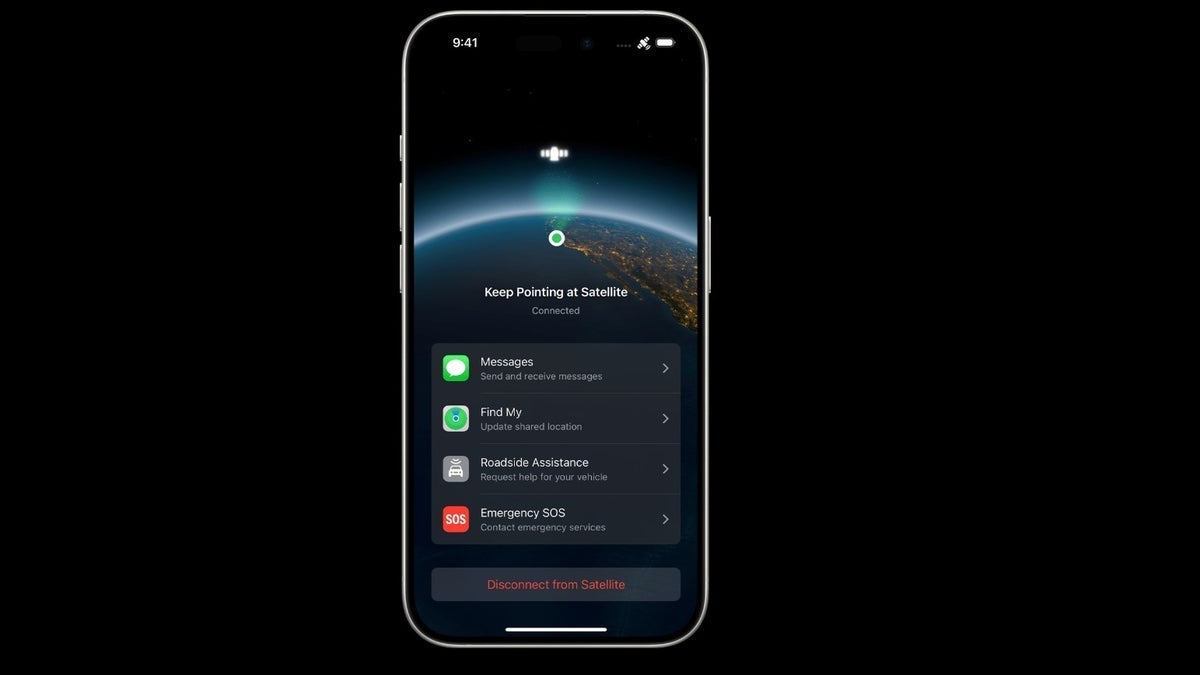TS2332: 'this' cannot be referenced in current location
TS2332: 'this' cannot be referenced in current location TypeScript is a popular open-source programming language developed by Microsoft. It’s often referred to as a superset of JavaScript because it builds on JavaScript by adding optional static types. These types allow developers to define the structure and behavior of variables, functions, and objects, making programs easier to debug and maintain. TypeScript compiles to plain JavaScript for execution, which means it seamlessly integrates with existing JavaScript projects. Simply put, types in TypeScript are what allow you to specify the kind of data a variable or function should handle. For instance, you can declare that a variable must always hold a number, a string, or a custom structure (like objects or classes). By catching errors before runtime, TypeScript can prevent many common JavaScript pitfalls. If you're eager to dive deeper into learning TypeScript or want to explore how AI tools like GPTTeach can help you program more efficiently, don’t forget to subscribe to my blog for more tutorials and insights! What is a Superset Language? A superset language adds features and capabilities to an existing language. TypeScript extends JavaScript by introducing features like static types, interfaces (custom structures for objects), and enums (a way to define constant sets of values). Unlike independent languages, a superset language like TypeScript builds upon its base—JavaScript—and must always compile its code into JavaScript to run. Using TypeScript, you can write JavaScript with additional guarantees about the behavior of your code. For instance, TypeScript enables developers to identify type errors during development instead of discovering them when the program runs. By using TypeScript as a superset of JavaScript, developers enjoy additional tools while still being able to interoperate easily with existing JavaScript projects. Understanding TS2332: 'this' cannot be referenced in current location. The TypeScript error TS2332: 'this' cannot be referenced in current location often leaves developers frustrated. Put simply, this error occurs because the this keyword is being used in a part of the code where TypeScript doesn’t allow or understand it—generally because of how this works in JavaScript. To clarify what’s happening, let’s first quickly discuss what this represents. In JavaScript (and TypeScript), this dynamically points to the object that is executing the current function. However, not all functions are guaranteed to have a valid or meaningful this context based on where they are defined or executed. For example, when working within static methods, standalone functions, or arrow functions, this might not behave as you'd expect. Because TypeScript enforces strict typing, it recognizes situations where this cannot be referenced validly and throws TS2332. Example of the Error Here’s an example that will trigger TS2332: 'this' cannot be referenced in current location: class Example { static value: string = "Hello, static world!"; static printValue() { console.log(this.value); // This works because `this` refers to the class. } static invalidMethod() { const print = () => { console.log(this.value); }; print(); // Error: TS2332: 'this' cannot be referenced in current location. } } In the code above: this.value works in the printValue method since this refers to the class itself in a static context. Inside the arrow function (const print = () => {}), TypeScript raises TS2332: 'this' cannot be referenced in current location because it can’t guarantee what this refers to in this context. How to Fix TS2332: 'this' cannot be referenced in current location. To fix this error, you need to explicitly ensure that this is being used where it is valid. Let’s rewrite the problematic code to avoid the error: Solution 1: Use a Static Context Ensure this is being used inside a properly scoped static method or function: class Example { static value: string = "Hello, static world!"; static validMethod() { const print = () => { console.log(Example.value); // Explicitly refer to the class itself. }; print(); // No error now. } } Here, rather than using this.value, we explicitly reference Example.value. This approach resolves the ambiguity TypeScript is complaining about. Important to Know! TypeScript enforces type safety, and one way it does so is by narrowing invalid use cases of this. When you see TS2332: 'this' cannot be referenced in current location, remember: Static methods belong to the class itself, not an instance, so this refers to the class. Arrow functions do not create their own this context but instead inherit it from the surrounding scope. Avoid ambiguous or implicit use of this by explicitly referencing the class or using function bindings. Solution 2: Save this

TS2332: 'this' cannot be referenced in current location
TypeScript is a popular open-source programming language developed by Microsoft. It’s often referred to as a superset of JavaScript because it builds on JavaScript by adding optional static types. These types allow developers to define the structure and behavior of variables, functions, and objects, making programs easier to debug and maintain. TypeScript compiles to plain JavaScript for execution, which means it seamlessly integrates with existing JavaScript projects.
Simply put, types in TypeScript are what allow you to specify the kind of data a variable or function should handle. For instance, you can declare that a variable must always hold a number, a string, or a custom structure (like objects or classes). By catching errors before runtime, TypeScript can prevent many common JavaScript pitfalls.
If you're eager to dive deeper into learning TypeScript or want to explore how AI tools like GPTTeach can help you program more efficiently, don’t forget to subscribe to my blog for more tutorials and insights!
What is a Superset Language?
A superset language adds features and capabilities to an existing language. TypeScript extends JavaScript by introducing features like static types, interfaces (custom structures for objects), and enums (a way to define constant sets of values). Unlike independent languages, a superset language like TypeScript builds upon its base—JavaScript—and must always compile its code into JavaScript to run.
Using TypeScript, you can write JavaScript with additional guarantees about the behavior of your code. For instance, TypeScript enables developers to identify type errors during development instead of discovering them when the program runs. By using TypeScript as a superset of JavaScript, developers enjoy additional tools while still being able to interoperate easily with existing JavaScript projects.
Understanding TS2332: 'this' cannot be referenced in current location.
The TypeScript error TS2332: 'this' cannot be referenced in current location often leaves developers frustrated. Put simply, this error occurs because the this keyword is being used in a part of the code where TypeScript doesn’t allow or understand it—generally because of how this works in JavaScript.
To clarify what’s happening, let’s first quickly discuss what this represents. In JavaScript (and TypeScript), this dynamically points to the object that is executing the current function. However, not all functions are guaranteed to have a valid or meaningful this context based on where they are defined or executed. For example, when working within static methods, standalone functions, or arrow functions, this might not behave as you'd expect. Because TypeScript enforces strict typing, it recognizes situations where this cannot be referenced validly and throws TS2332.
Example of the Error
Here’s an example that will trigger TS2332: 'this' cannot be referenced in current location:
class Example {
static value: string = "Hello, static world!";
static printValue() {
console.log(this.value); // This works because `this` refers to the class.
}
static invalidMethod() {
const print = () => {
console.log(this.value);
};
print(); // Error: TS2332: 'this' cannot be referenced in current location.
}
}
In the code above:
-
this.valueworks in theprintValuemethod sincethisrefers to the class itself in a static context. - Inside the arrow function (
const print = () => {}), TypeScript raises TS2332: 'this' cannot be referenced in current location because it can’t guarantee whatthisrefers to in this context.
How to Fix TS2332: 'this' cannot be referenced in current location.
To fix this error, you need to explicitly ensure that this is being used where it is valid. Let’s rewrite the problematic code to avoid the error:
Solution 1: Use a Static Context
Ensure this is being used inside a properly scoped static method or function:
class Example {
static value: string = "Hello, static world!";
static validMethod() {
const print = () => {
console.log(Example.value); // Explicitly refer to the class itself.
};
print(); // No error now.
}
}
Here, rather than using this.value, we explicitly reference Example.value. This approach resolves the ambiguity TypeScript is complaining about.
Important to Know!
TypeScript enforces type safety, and one way it does so is by narrowing invalid use cases of this. When you see TS2332: 'this' cannot be referenced in current location, remember:
- Static methods belong to the class itself, not an instance, so
thisrefers to the class. - Arrow functions do not create their own
thiscontext but instead inherit it from the surrounding scope. - Avoid ambiguous or implicit use of
thisby explicitly referencing the class or using function bindings.
Solution 2: Save this into a Variable
Another way to avoid TS2332 is to save the correct reference to this using a variable before entering a block or a nested function:
class Example {
value: string = "Hello, instance world!";
instanceMethod() {
const self = this; // Save reference to `this`.
function innerFunction() {
console.log(self.value); // Use the saved reference.
}
innerFunction(); // No error now.
}
}
By saving a reference to this in a variable (self), you ensure that the correct context is available and prevent TypeScript from throwing the error.
Frequently Asked Questions (FAQ)
Q1: Why does 'this' behave differently in static methods?
In static methods, this refers to the class itself, not an instance of the class. If you call a static method directly, there’s no instance (new keyword) tied to it, so this is limited in scope.
Q2: Do arrow functions always break 'this'?
No, but arrow functions don’t create their own this context. They inherit this from the surrounding method or function. Properly understanding the scope is key to avoiding context-related issues.
Q3: Should I avoid using 'this' altogether?
Not at all! In most scenarios (class instance methods, custom objects), this is perfectly fine. Just be mindful of the context in which you use it, especially inside complex nested functions.
Final Thoughts
TS2332: 'this' cannot be referenced in current location is one of those errors that at first glance can seem intimidating. However, once you understand the basics of how TypeScript handles this in different contexts—static methods, arrow functions, and more—you’ll be able to resolve this error with ease. The key takeaway is to always pay close attention to where this is being used and ensure that its context is known and valid.
For more on TypeScript, interface design, and problem-solving tips, stay tuned to future articles. And don’t hesitate to explore GPTTeach to accelerate your coding skills with AI-powered tools. Happy coding!






























































































































































![[The AI Show Episode 143]: ChatGPT Revenue Surge, New AGI Timelines, Amazon’s AI Agent, Claude for Education, Model Context Protocol & LLMs Pass the Turing Test](https://www.marketingaiinstitute.com/hubfs/ep%20143%20cover.png)



























































































































![[FREE EBOOKS] AI and Business Rule Engines for Excel Power Users, Machine Learning Hero & Four More Best Selling Titles](https://www.javacodegeeks.com/wp-content/uploads/2012/12/jcg-logo.jpg)












































































































































































































































![Hostinger Horizons lets you effortlessly turn ideas into web apps without coding [10% off]](https://i0.wp.com/9to5mac.com/wp-content/uploads/sites/6/2025/04/IMG_1551.png?resize=1200%2C628&quality=82&strip=all&ssl=1)




![This new Google TV streaming dongle looks just like a Chromecast [Gallery]](https://i0.wp.com/9to5google.com/wp-content/uploads/sites/4/2025/04/thomson-cast-150-google-tv-1.jpg?resize=1200%2C628&quality=82&strip=all&ssl=1)











![iPadOS 19 May Introduce Menu Bar, iOS 19 to Support External Displays [Rumor]](https://www.iclarified.com/images/news/97137/97137/97137-640.jpg)

![Apple Drops New Immersive Adventure Episode for Vision Pro: 'Hill Climb' [Video]](https://www.iclarified.com/images/news/97133/97133/97133-640.jpg)



































































































































